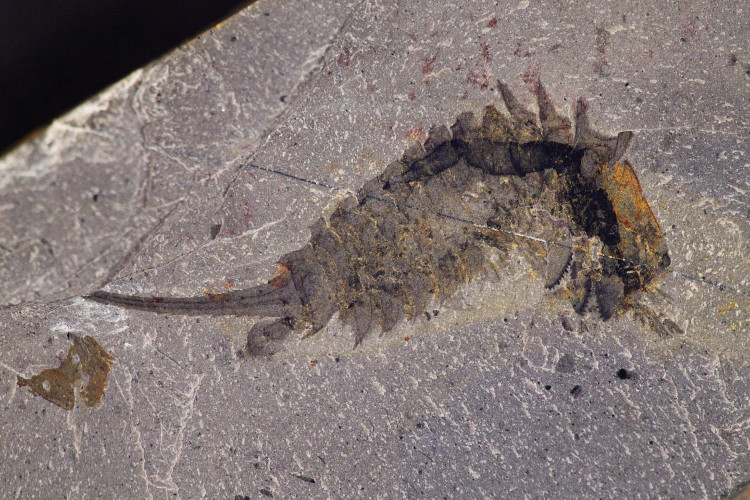The ancient sea monster tore the prey with its sharp head
The structure at the beginning of the variable Habelia optata, the creature that lived 508 million years ago, became a particularly strong predator compared to its small size.
Researchers identified Habelia optata , one only about two centimeters long but could tear the prey off with a sharp and flexible head, with them close to the subfamily by fossil analysis, Newsweek on 21 / 12 coverage.
The sub-sector of pliers consists of a number of species such as spiders, spiders and sea spiders.The creatures in this subscriber have an appendage in front of their mouth called pliers . "Habelia shows details of the body structure that pliers grow. Thus, we can find solutions to some long-standing questions , " said Cédric Aria, the study's author.
Previously, scientists knew that pliers had 7 pairs of limbs, but modern species in this subsector only had 6 pairs. A pair of reduced spending is evidence that the women once existed in this position.
After analyzing 41 specimens mainly from British Columbia, Canada, paleontologists found, Habelia possessed characteristic appendages in the middle of her body, or chest. It also has many sharp spines growing throughout the body, which can be used to defend against enemies. The first part also has auxiliary parts for chewing teeth.
"The structure of the sub-unit combined with the function turns Habelia into a particularly strong predator compared to its small size. It can tear prey to be both flexible and effective , " Aria commented.

Habelia optata, an undersea predator who lived 508 million years ago.(Photo: Newsweek).
Habelia was first described by paleontologist Charles Doolittle Walcott in 1912, a marine creature that lived 508 million years ago. Previously, scientists identified Habelia in the arthropod sector, but could not determine which category they belonged to.
"From an evolutionary point of view, Habelia is very close to the point of separation between the subdivided subdivision and the subdivision mandibulates . But the similarities with mandibulates are the secondary transformations of properties that are somewhat available in pliers This suggests that pliers are derived from higher structural transformation organisms , " said Aria.
- Monster Lake Nix
- The image resembles the Loch Ness monster head
- Headless skeleton of 6 meter long sea monster
- Loch Ness monster monster objects head up on the lake
- Chinese doctor: Do not consider the first implant to be a monster
- The 'monster' species grows back to its head, turning prey into water
- Video: The image is said to be Loch Ness monster
- The rabbit 'monster' grows horny all over his head
- The mystery in a person's brain is pierced through his head
- Whales used to be assassins that hunted sharp teeth like lions
- Digging the 250 million year old sea monster in the American desert
- Crocodile-head monster alone buffalo caused a stir in Thailand
 Discovered an ancient centipede fossil 99 million years old
Discovered an ancient centipede fossil 99 million years old Discovered bat-like dinosaurs in China
Discovered bat-like dinosaurs in China Discovered a 200-year-old bronze cannon of the coast
Discovered a 200-year-old bronze cannon of the coast Discover 305 million-year-old spider fossils
Discover 305 million-year-old spider fossils